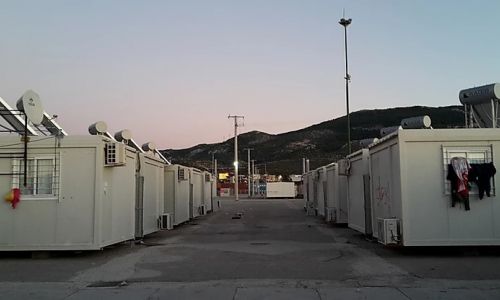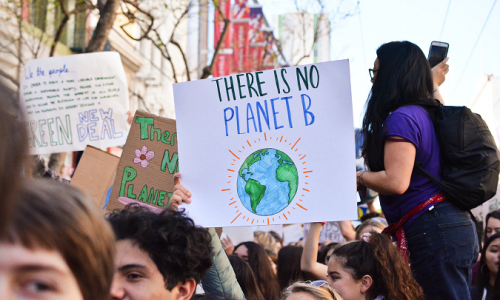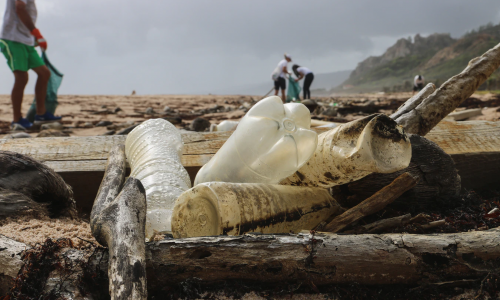The Link between Pandemics and the Ecological Crisis
The global coronavirus pandemic is the biggest public health crisis in a generation and has destructed lives and livelihoods globally in ways we simply couldn’t have imagined even a few months ago. But there’s another crisis going on simultaneously. One that’s been grumbling along for years now and will cause more tragedy and destruction than a pandemic – the climate and ecological crisis – and the two are linked in more ways than may be initially obvious.
Fran Haddock
Wildlife populations have decreased by 60% in the last 50 years and the global rate of species extinction is now tens to hundreds of times higher than it has averaged over the past 10 million years. At the same time, research suggests that outbreaks of new infectious diseases have quadrupled in the last century.
Approximately 70% of emerging diseases are thought to be zoonotic in origin, also known as ‘spillover’. Although it is not confirmed, it is suspected that this novel coronavirus originated from bats and passed possibly via another mammalian host at a live animal or ‘wet’ market in Wuhan, China. This is similar to the suspected origin of the 2003 SARS epidemic. Here the link to harming and exploiting often endangered wildlife is clear, but what about for other diseases?
Emerging disease hotspots are more common in areas rich in wildlife. Both Ebola and HIV outbreaks have been linked to communities hunting and consuming meat from wild animals. Ebola was also found to have occurred mostly in deforested hotspots. Similarly, higher incidences of both malaria and Lyme disease have been found in deforested areas. The mechanisms behind this still aren’t clear but may include increased chances of human-animal interaction along with shifting of breeding sites for vectors such as mosquitos.
Although the majority of zoonoses are from wild animals, some have jumped from humans via livestock such as Malaysia’s Nipah virus, which arose due to intensification of pig farming in a bat-rich hotspot. And of course, the ever-impending threat of an avian H5N1 influenza which could be transmissible between humans is still present, in which intensive livestock farming could certainly amplify the spread and/or lead to the ethically questionable destruction of millions of healthy birds.
Of course, causative factors for disease ‘spillover’ are complex, however it seems reasonable to conclude that turning the planet into a human-dominated eco-system - a phase known as the ‘Anthropocene’ now by many – simultaneously turns the planet into a petri-dish for diseases emerging from animals. Increased population and human overcrowding certainly increase the risk of disease spread, as does anything that brings us excessively close to wildlife or increases movement, stress or mixing of animals. Arguably the biggest threat of all - climate change - will also increase the risk of many vector-borne diseases like malaria and Zika, which are spreading further over longer seasons.
It may seem convenient to place blame largely on the Global South and emerging economies, however the cultural and socioeconomic side to this is just as significant as the ecological side. Firstly, what people eat is a huge part of their culture and society. More importantly, some populations have no option but to hunt, eat or sell wildlife or buy cheaper food from wet markets due to food insecurity and economic pressures. At the same time, it is often marginalised communities who are at risk of suffering the most from these diseases. Placing the blame solely on overpopulation could be described as an ‘ecofascist’ narrative, especially as we know poorer countries with higher birth rates have much lower ecological footprints per individual than richer countries.
Deforestation is often driven by the need to produce commodities for richer countries. Wildlife trade is also a significant problem in Western countries, risking disease spread such as the 2003 outbreak of monkey pox, which was due to a booming international wildlife trade in the USA. Shockingly, there are now more tigers in captivity in the USA than left in the wild.
So, what can we do? Vets of course have a huge part to play in prevention of disease outbreaks through our work in public health and agriculture, and we can play a part in the health of ecosystems as wildlife vets or in conservation medicine. Is it also time to make the pathways to these careers more open and encouraged during training and post-graduation, and celebrate the roles vets can play in One Health and Planetary Health? Vets are trusted and respected members of society, so the position that we take on the ecological crisis is important in influencing the public.
As individuals, there has never been a more pressing time to consider the way we tread on the planet, albeit whilst being gentle on ourselves during these difficult times. Questions we could start asking ourselves may include - could our actions be encouraging damage of ecosystems and loss of biodiversity at home or somewhere else in the world, is what we’re eating good for the health of humanity and the planet, and are we also fighting for equality?
Fran Haddock
Small animal veterinary surgeon and a member of the Vet Sustain community. Fran is an environmental activist who runs a sustainability blog @envirobite on instagram, an online environmental book club and writes for a weekly environmental newsletter ‘Curious Earth’.
Together we can help to prevent further decline of diverse wild plant and animal species
Pledge your support to the Vet Sustain climate emergency campaign.



